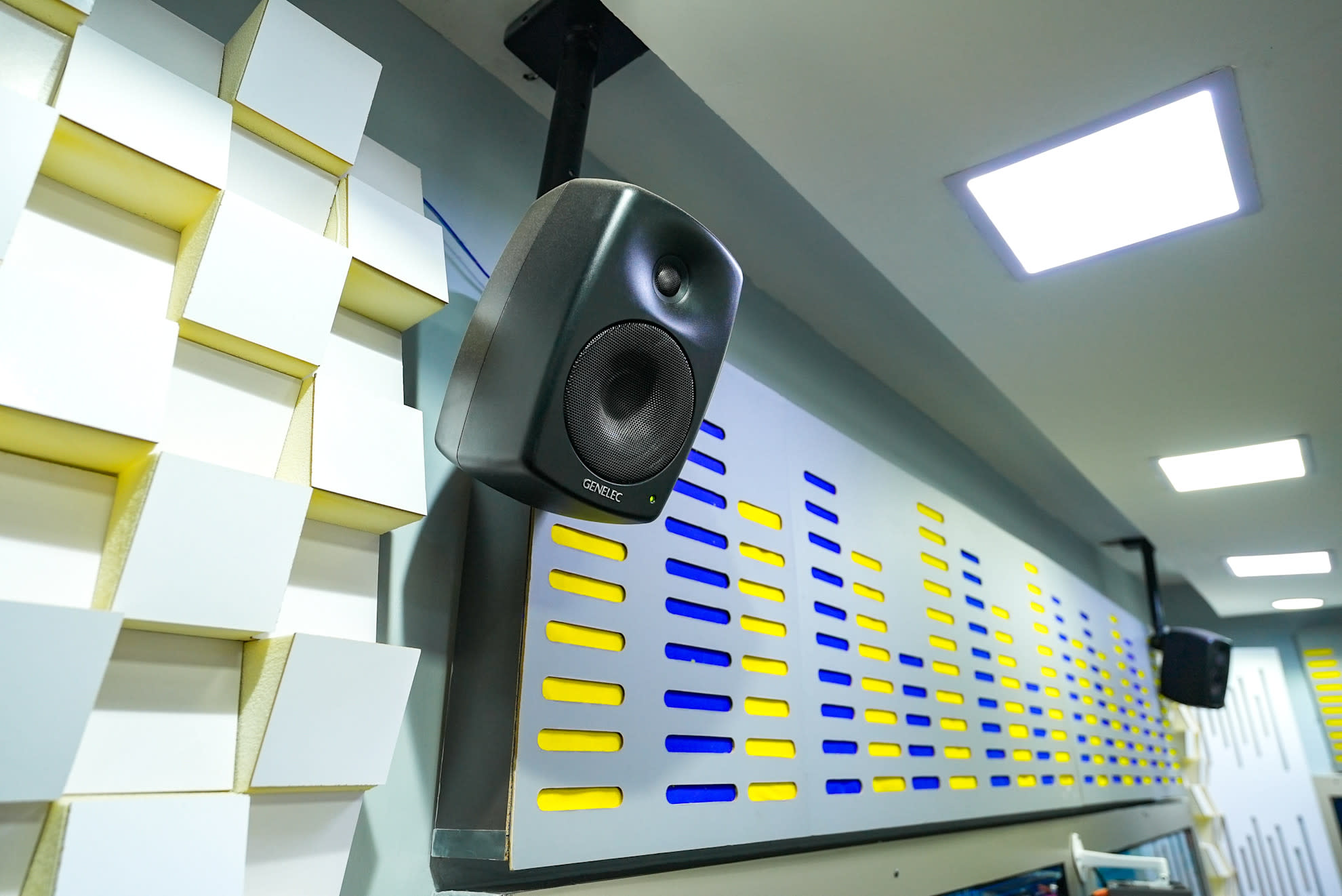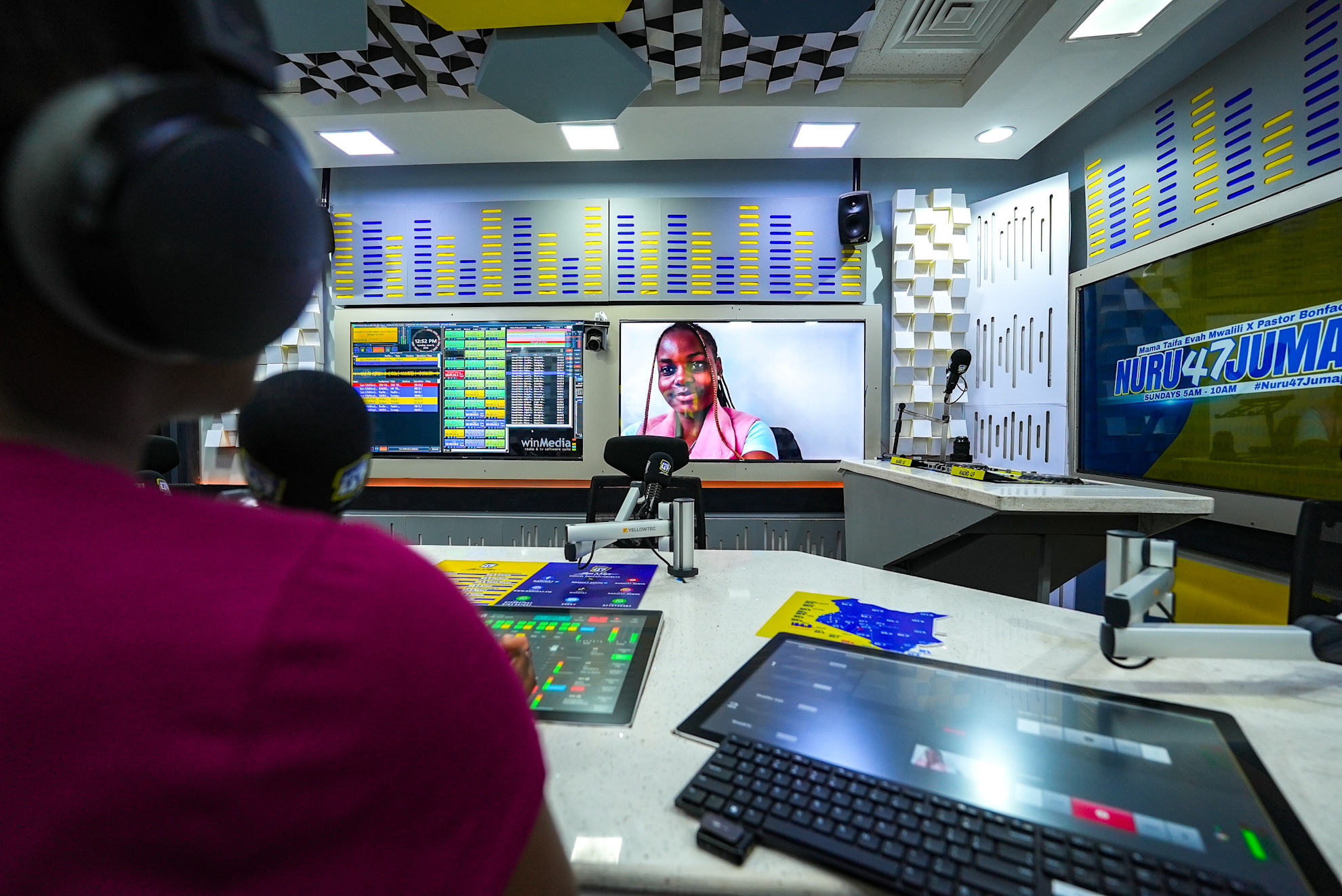Radio 47 launches Africa's first fully IP-based broadcast facility
Broadcast media in Africa is changing rapidly. More creators are stepping up, driven by greater digital access and a growing appetite for real-time storytelling. While some broadcasters are still tied to legacy systems, Kenya’s Radio 47 is showing what the future could look like, with the help of Genelec’s Smart IP networked loudspeaker technology.
“We didn’t just want to upgrade what we had, we wanted to rethink the whole idea of what a media facility could be,” says Fred Martin Kiwalabye, Multimedia Systems Integration Engineer at Mediacity Ads Ltd, who led the project. “The goal was to create something truly flexible and future-ready, and that meant starting with an IP-native foundation.”
Radio 47 blends radio, television, livestreaming and remote production under one roof, all connected through a unified network infrastructure. The design demanded loudspeaker monitoring that was both accurate and consistent across rooms, and that’s where Genelec came in. “We chose Genelec for its clarity, transparency and the confidence it gives you,” Kiwalabye explains. “In a system where production standards had to be high from day one, Genelec made it easy to trust what we were hearing.”
Producers and engineers started to really trust what they were hearing.

The team installed three 4430 Smart IP loudspeakers in the Main Studio and two of the more compact 4410s in the Visual Radio Control Room. In total, five loudspeakers cover the key listening zones across the facility. “We needed loudspeakers that were compact enough to physically fit the space, but powerful enough to give us real accuracy,” Kiwalabye says. “They also had to integrate with our IP workflows, and Smart IP’s compatibility with AES67 made that really straightforward.”
To make sure every space sounded exactly right, the team used Genelec’s Smart IP Manager software to calibrate the loudspeakers. “Smart IP Manager helped us calibrate perfectly for each room, which is vital when you’re working across platforms and spaces,” Kiwalabye adds. “You don’t realise how much the room is shaping the sound until Smart IP Manager shows you. It flattened out the frequency curve and instantly tightened our stereo image. Suddenly, every room felt like it was speaking the same language.”
That consistency became a key creative asset across the station. “Producers and engineers started to really trust what they were hearing,” says Kiwalabye. “You could see the confidence grow. People began mixing faster, experimenting more. Whether they were editing video clips or monitoring a livestream, they weren’t second-guessing anymore. That kind of trust makes a huge difference.”
Technically, the Genelec loudspeakers were integrated using AES67-compatible interfaces, allowing them to receive digital audio directly from the Lawo-powered IP backbone, via both RAVENNA and Dante bridges. “There’s no patching, no waiting, everything just routes from a single dashboard and arrives exactly as it should,” Kiwalabye explains. “That’s the kind of precision that makes production flow.”
Smart IP Manager software helped us calibrate perfectly for each room.

Of course, building a fully IP-based facility came with some hurdles. “Syncing up the clocking between our Dante and RAVENNA domains was quite a challenge as it took a bit of time to iron out, but once we did, the whole system ran beautifully. It’s powerful, reliable and easy to manage.”
Ease of use was essential. “One of our priorities was making sure the setup was intuitive,” says Kiwalabye. “We didn’t want to build something that only a few people could operate, and that’s another reason we went with Genelec. Once people heard the detail and separation, they were hooked. Even the producers who were a bit unsure about digital control started to love the system.”
After successfully delivering Africa’s first fully IP-based radio facility, the results have already made an impact. “Day-to-day production has improved across the board,” Kiwalabye comments. “Live shows are smoother, mixes are tighter, and collaboration between rooms is easier. The audio quality is consistent and our teams notice it.”
But for Kiwalabye, the real highlight was hearing the first calibrated playback through the Genelecs. “That was a moment,” he says. “After months of design, wiring and testing, that clean, balanced sound made everything real. It was emotional.”
While Radio 47 is a major milestone, it’s just the beginning. “We’ve already started talking to broadcasters in Uganda, Rwanda and Tanzania about similar projects,” Kiwalabye concludes. “We’ve built a model that can scale, and Genelec will definitely be part of that future.”




